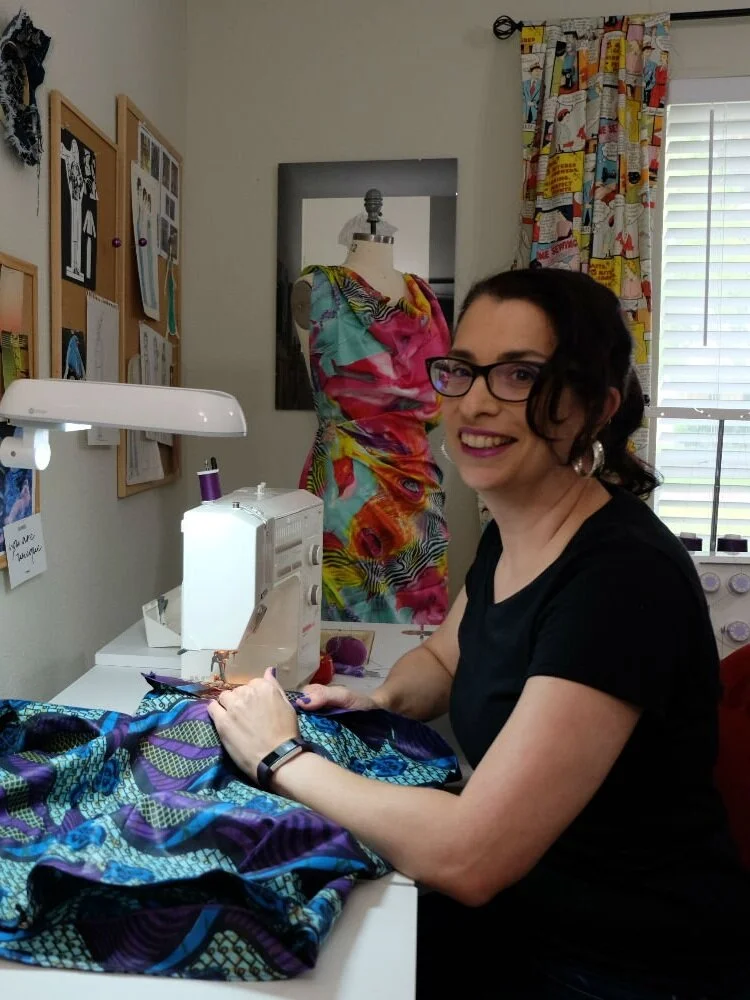So You Want to Learn to Sew?
Get Started Here!
Are you a “I-just-got-my-first-machine-yesterday” Beginner?
Have you tired to sew with a beginner patterns, only to have a hard time understanding what to do?
Do you need step-by-step explanations of the basics?
Are a newbie to sewing and overwhelmed with all of the information on the internet?
Sew Sew Lounge makes it easy for anyone to learn to sew! This site is for the beginner sewist. My only assumption is that you don’t have any experience.
You need to start with the basics to build a solid foundation to grow your sewing skills.
Having the right skills and know-how will ensure success and increase your confidence. Sewing clothes isn’t just about being creative with fabric and making original designs…it’s also about the accomplishment and satisfaction you get from making something. Then you get compliments and get to say “Why thank you, I made it myself.” Which is one of the best feelings ever!
Practice Stitching without fabric
Before you tackle an actual sewing project, get comfortable sewing with your machine. These stitching exercises help you sew straight lines, turn corners, and follow curves. Click here to get the PDF download. Don’t thread your machine. Instead concentrate on punching needle holes in the paper along each line. When you finish, hold your paper up to a light to see how straight you sewed. Repeat these exercises until you are confident using your machine.
Solid Stitch Lines, video at 0:50
Cubist Stitch Lines, video at 3:40
Circle Stitch Lines, video at 6:57
Get Started With Your Sewing Machine
Let’s figure out the type of machine you are using and how to thread it!
Sewing requires two threads to make stitches. One spool of thread sits on the top of the machine and goes through the needle. The other thread comes from the bobbin which sits inside the bottom of the machine. The needle thread goes through the fabric, then catches the bobbin thread in a loop. This process makes a line of stitches.
Most sewing machines have a drop in, “top load” bobbin (most Singer, Brother, and Juki models).
But some have a “front load” bobbin with a bobbin casing (Bernina, Jenome, and vintage sewing machines).
I’ve always sewn using a Bernina, and learned about a bobbin casing and how to thread it from day one. Neither system is better than the other, it depends on the machine you start with. The videos below show how to thread your machine with a drop-in bobbin or a sewing machine with a front load bobbin and bobbin casing. Pick the one that is right for you!
This video will teach you how to thread a bobbin, load it into a bobbin case, and thread the rest of your sewing machine to make it sew.
This video will teach you how to thread a bobbin, load it into a top load/drop-in bobbin, and thread the rest of your sewing machine to make it sew.
Get Started with Stitches
The straight stitch is your new best friend. As you learn more about sewing you will find yourself using it more than the others. Changing the length of the stitch will give you even more options! When it comes down to it, you will only use two stitches on your machine— the straight stitch and the zigzag stitch.
More stitches on your machine are nice to have, but not required for everyday sewing.
When you sit down to sew, make sure to set your desired stitch length. I sew on a #2.5 setting, because it creates a sturdy stitch that is easy to rip out if I make a mistake.
I worked in the Houston Ballet costume shop and stitched all seams on a #3 stitch. That way the seams would rip under strain before the fabric. It made repairs easy and prevented remaking an entire costume.
I recommend beginners sew with a #2.5 stitch setting.
Sometimes you will need a large stitch, a basting stitch, to make curves round or to create gathers. All basting stitches are a #5 (or higher) stitch, which is the largest stitch on any sewing machine.
Check the manual of your sewing machine to determine which dial to use to adjust your stitch length.
You will use the straight stitch more than any other. This video will show you how to get started and teach you how to adjust your stitch length of a variety of uses.
Without a doubt the zig zag stitch is the most versatile of ALL the stitches. This video will teach you how to adjust your stitch length and stitch width to make three different zig zag stitches.
Practice Stitching with fabric
Thread your machine, grab a scrap of fabric and practice sewing straight lines!
Get a fabric scrap to practice and get comfortable using your machine. Don't stress about mistakes. Play with the different stitch lengths. Alternate between a straight stitch and zigzag stitch.
Don’t forget to backstitch! The backstitch has it’s own button, usually located on the front of the machine near the needle.
Press this button, the needle reverses course and goes backwards to sew over the stitch line.
Backstitch at the beginning and end of all seams to keep them from coming apart while sewing.
Now Put Those Skills to Use!
Ready to start sewing for real? These Free Tutorials are a great way to build skills and self-assurance.














